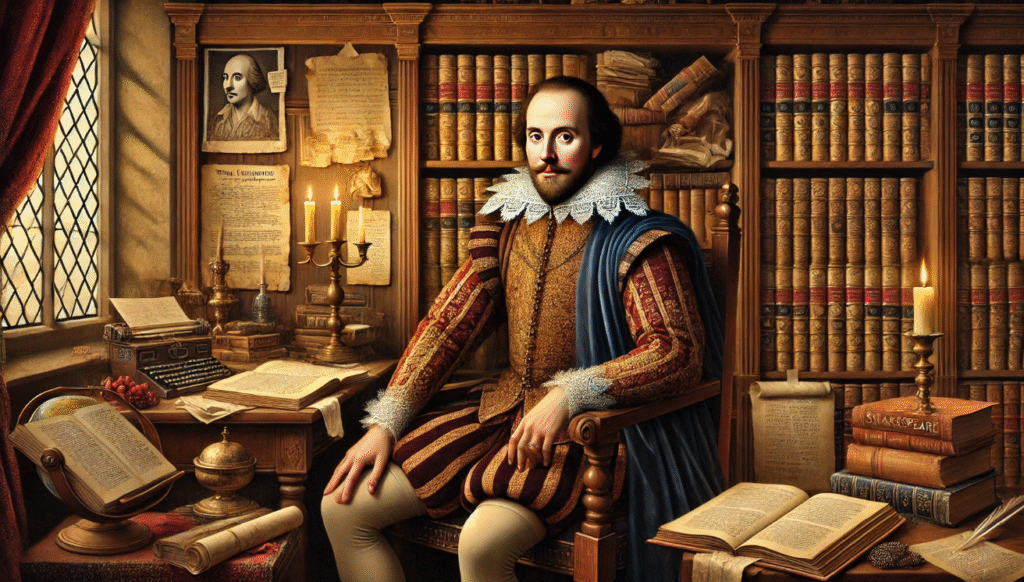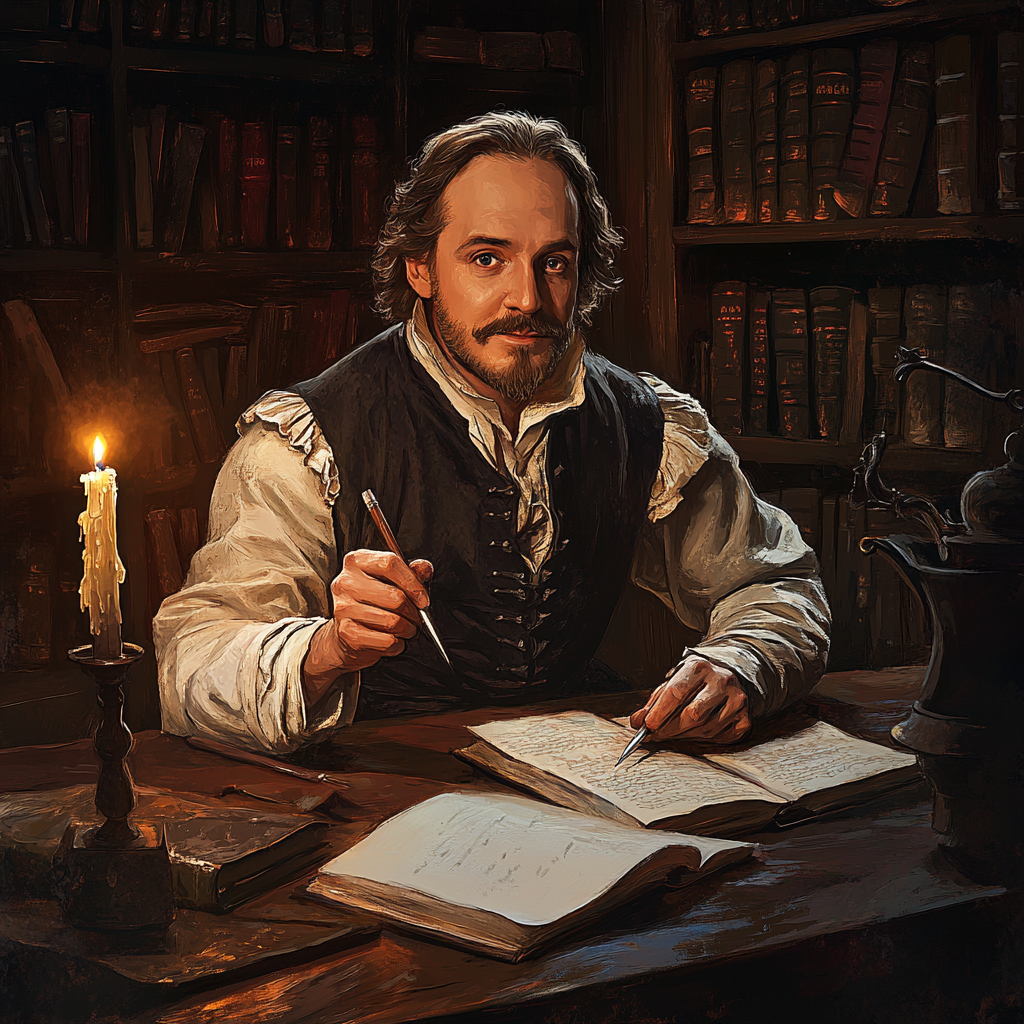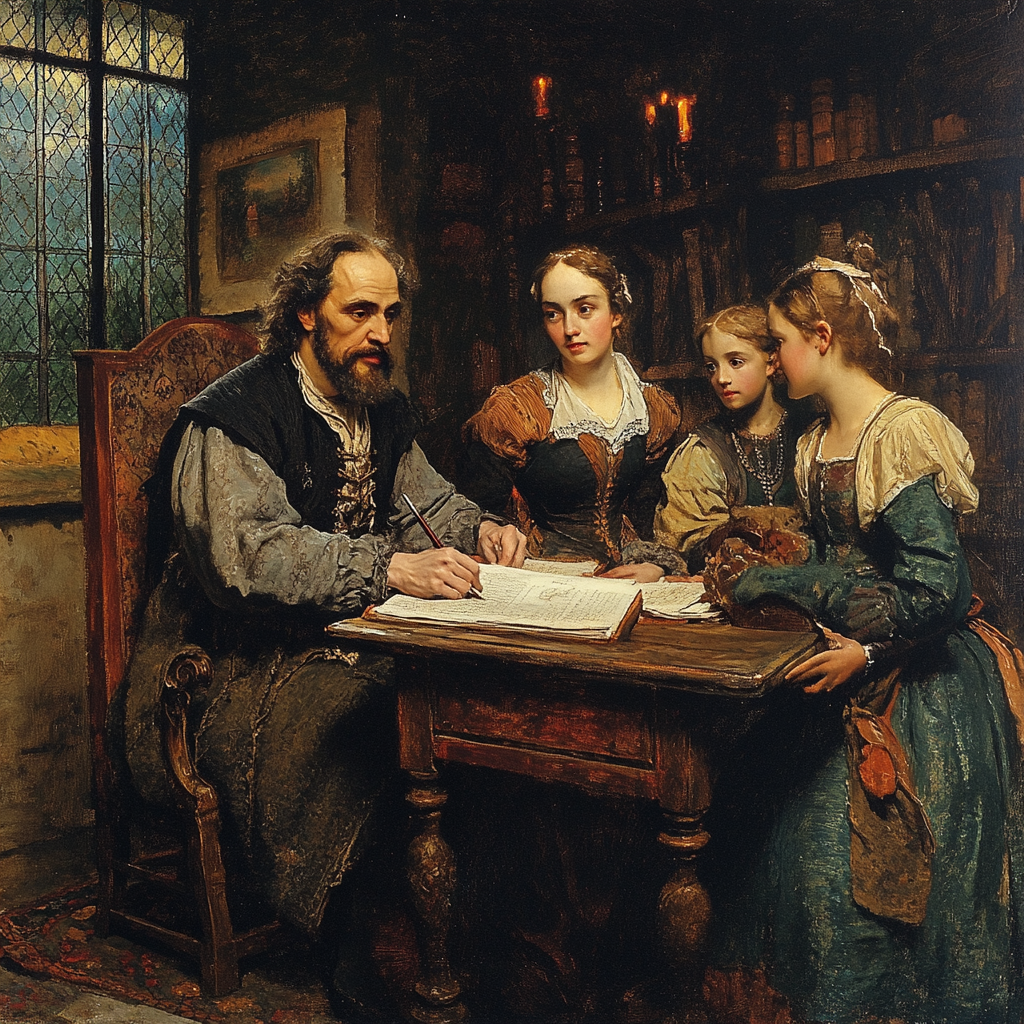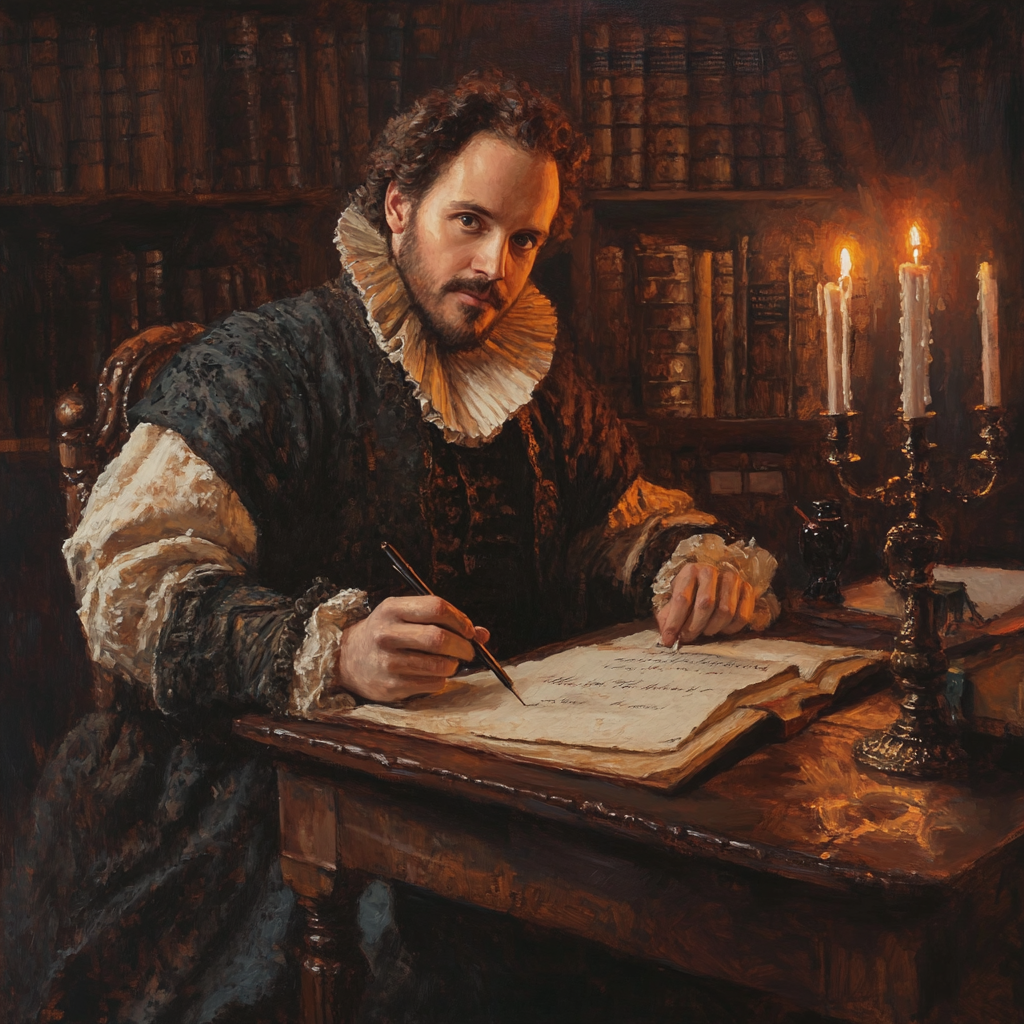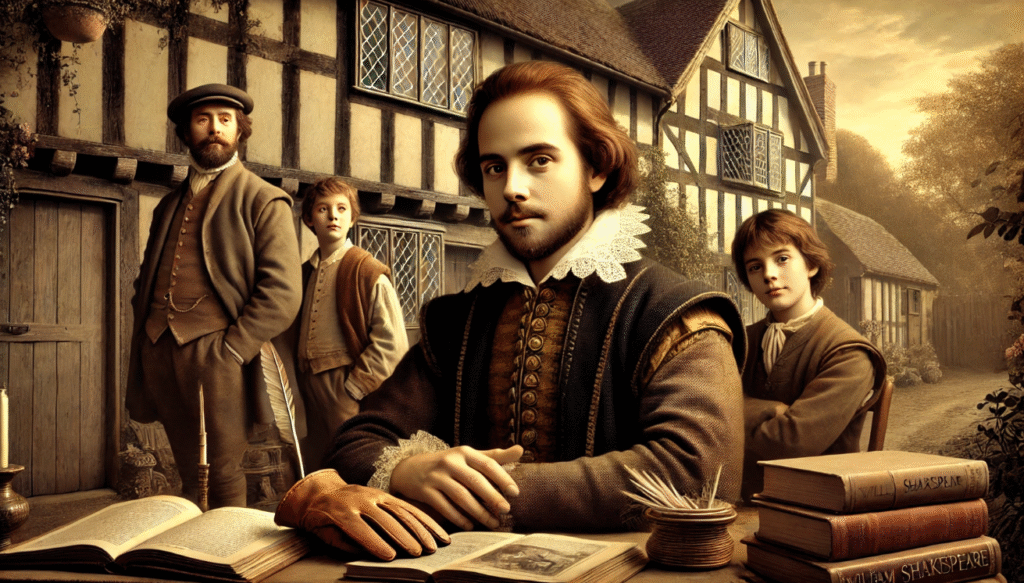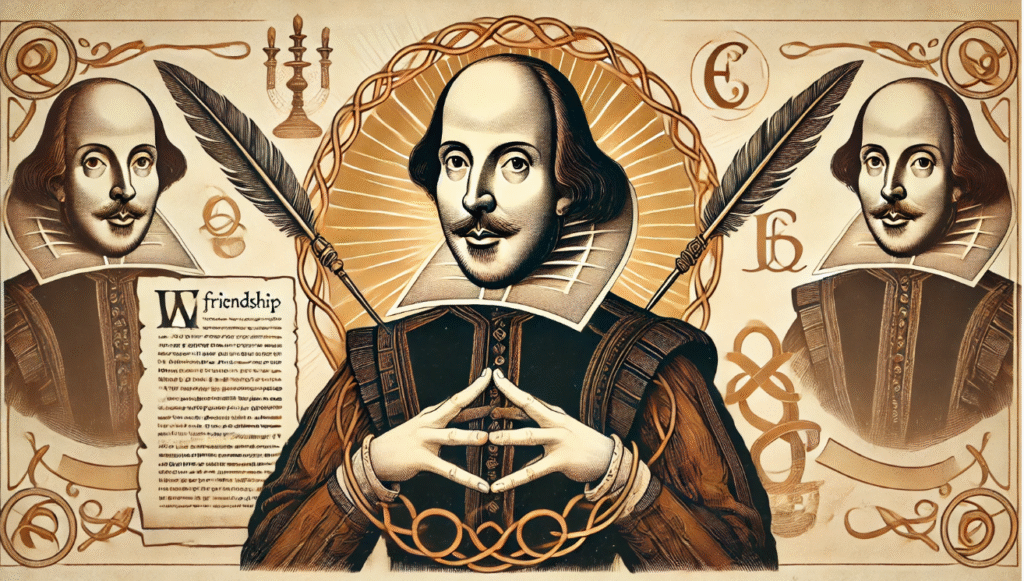Shakespeare’s influence on literature, language, and even popular culture is truly remarkable. With an estimated 4 billion copies of his works sold, his impact is undeniable. From his innovative use of language to his timeless themes of love, power, and betrayal, Shakespeare’s legacy continues to shape the way we understand and appreciate art and storytelling. Even today, his words and characters continue to inspire and resonate with audiences around the world.
William Shakespeare’s work still matters today because Shakespeare’s professional achievements of the profound impact he had on literature and theatre. His plays and sonnets revolutionized the way stories are told, and his complex characters and universal themes continue to resonate with audiences across the globe. Additionally, his exploration of human nature, morality, and the complexities of the human experience remain relevant and thought-provoking to this day. Shakespeare’s influence can be seen in countless adaptations, interpretations, and references in modern media, making his work a timeless and integral part of our cultural heritage.
Shakespeare’s Early Life and Path to Success

Background:
William Shakespeare was born in Stratford-upon-Avon in 1564 and received his early education at the local grammar school. He married Anne Hathaway in 1582, and the couple had three children. In the late 1580s, Shakespeare moved to London to pursue a career in the literary and theatrical world. He initially faced struggles and challenges, but eventually found success as a playwright and actor.
First Steps in Theatre:
Joining the acting company Lord Chamberlain’s Men, which eventually became the King’s Men, was a significant milestone in Shakespeare’s career. His early works such as Henry VI gained attention and helped establish his reputation as a playwright. This period marked the beginning of Shakespeare’s prolific and influential career in the theater.
Revolutionary Contributions to Literature
Innovations in Playwriting:
When it comes to literature and theater, blending genres can create a unique and engaging experience for audiences. By combining elements of comedy and drama in works like “The Tempest,” the audience can experience a range of emotions and be kept on their toes as the story unfolds. Similarly, the introduction of complex characters with psychological depth, such as Hamlet and Macbeth, adds a layer of richness to the storytelling. These characters grapple with internal struggles and moral dilemmas, allowing for a deeper exploration of human nature and the complexities of the human psyche. Overall, blending genres and introducing complex characters with psychological depth adds depth and complexity to literature and theater, creating a more immersive and thought-provoking experience for audiences.

Mastery of the English Language:
Did you know that over 1,700 new words and phrases were created and are still in use today? Some of these words include “assassination” and “bedazzled.” It’s fascinating to think about how language continues to evolve and grow over time.

Development of Themes:
These universal themes have been explored in literature, art, and human experience for centuries. Love, ambition, jealousy, and power are all fundamental aspects of the human condition, and as such, they have a timeless appeal that transcends cultural and historical boundaries. These themes resonate with people across different cultures and eras because they speak to universal aspects of human nature and the complexities of human relationships. Whether it’s the tragic love story of Romeo and Juliet, the ambition and downfall of Macbeth, or the destructive power of jealousy in Othello, these themes continue to captivate audiences and remain relevant throughout time.
Shakespeare’s Impact on Poetry

The Sonnets:
William Shakespeare’s sonnets are a collection of 154 poems that are widely regarded as some of the greatest works of English literature. They cover a wide range of themes, including love, time, beauty, and mortality. Some of the key sonnets include Sonnet 18, often referred to as “Shall I compare thee to a summer’s day,” which explores the theme of immortalizing beauty through verse. Sonnet 116, “Let me not to the marriage of true minds,” delves into the nature of true love and its enduring qualities. Sonnet 130, “My mistress’ eyes are nothing like the sun,” takes a more realistic and down-to-earth approach to the topic of love and beauty.
Narrative Poems:
Venus and Adonis and The Rape of Lucrece are two of Shakespeare’s early narrative poems, both published in 1593 and 1594. These works were significant in establishing Shakespeare as a literary figure beyond the realm of theatre. Venus and Adonis is a narrative poem that tells the story of the seduction of the beautiful Adonis by the goddess Venus. The poem explores themes of love, desire, and mortality, and was widely popular during Shakespeare’s lifetime. The Rape of Lucrece, on the other hand, delves into the tragic story of the virtuous Lucrece, who is raped by the Roman prince Tarquin.
Transformations in Theatre

Pioneering the Modern Stage:
The Globe Theatre has been popularized and redefined through various collaborations with actors and producers, which have greatly enhanced the theatrical productions. These partnerships have brought new interpretations and innovative approaches to the classic works performed at the Globe, attracting a wider audience and reinvigorating interest in Shakespearean theatre. By working closely with talented individuals in the industry, the Globe Theatre has been able to offer unique and memorable experiences for audiences, solidifying its reputation as a leading venue for world-class theatre.
Innovations in Storytelling:
“A Midsummer Night’s Dream” by William Shakespeare is a classic example of a play that features non-linear narratives, multiple subplots, and complex resolutions. The play weaves together the stories of several different characters, each with their own desires and conflicts. The non-linear structure adds depth and complexity to the storytelling, as the various subplots intersect and influence each other. The play’s resolution is equally intricate, as the characters’ conflicts are resolved through a series of elaborate and interconnected events. This complexity adds richness and depth to the play, making it a timeless and enduring work of literature.

Catering to All Classes:
His works appealed to both commoners and the elite because they often dealt with universal themes and emotions that transcended societal divides. Additionally, his skillful use of language and storytelling captivated audiences from all walks of life, making his work accessible to a wide range of people. This ability to connect with both the common people and the elite helped to bridge societal divides and create a sense of shared understanding and appreciation for his art.
Enduring Legacy in Literature and Theatre
Global Influence:
The works of this author have been translated into over 100 languages, showcasing their global appeal and enduring impact. Their continued relevance is evident in modern adaptations, from books to films, demonstrating their ability to resonate with audiences across different mediums and time periods.

Role in Education:
Studying Shakespeare’s works is crucial for understanding the evolution of English literature. His plays and sonnets are considered a cornerstone of literary education worldwide because they have had a profound influence on the English language and literary tradition. By studying his works, students can gain insight into the historical and cultural context of the time, as well as the development of literary techniques and themes that continue to resonate in modern literature. Shakespeare’s impact on literature is undeniable, and his works continue to be a vital part of literary education for their enduring relevance and influence.
Modern Theatre Practices:

The techniques of stagecraft and storytelling employed by influential playwrights and directors continue to inspire their contemporaries and future generations. By using innovative staging, dynamic character development, and engaging narratives, these pioneers in the theater world have set a high standard for creative expression. Their work serves as a source of inspiration for aspiring playwrights and directors, influencing the way they approach their craft and pushing the boundaries of what is possible on stage. Through their groundbreaking techniques, these visionaries have left a lasting impact on the world of theater, shaping the way stories are told and experienced by audiences.
Shakespeare as a Cultural Icon

Representation in Popular Culture:
Certainly! The Lion King has been widely recognized for its references to classic literature, such as its parallel to Shakespeare’s Hamlet. The story of Simba’s journey mirrors that of Hamlet, with themes of revenge, betrayal, and the struggle for redemption. This connection to timeless literature is just one example of how The Lion King has become a symbol of timeless creativity in the world of film and storytelling. Its influence can be seen in various forms of modern literature, TV shows, and even stage productions, solidifying its place as a beloved and enduring piece of creative work.
Annual Celebrations and Festivals:
Shakespeare’s Birthday Celebrations in Stratford-upon-Avon are annual events that take place in honor of the famous playwright’s birthday. The celebrations typically include performances of Shakespeare’s plays, parades, concerts, and other cultural events. Visitors can also explore Shakespeare’s birthplace and other historic sites related to his life. It’s a great opportunity to immerse oneself in the world of Shakespeare and experience the rich cultural heritage of Stratford-upon-Avon.
Summary of Key Achievements:
Sure, I’d be happy to recap his contributions. William Shakespeare is widely regarded as one of the greatest playwrights and poets in the English language. He wrote 39 plays, including timeless classics such as “Romeo and Juliet,” “Hamlet,” and “Macbeth.” His works have had a profound influence on literature and theatre,with themes and characters that continue to resonate with audiences today. In addition to his plays, Shakespeare also wrote numerous sonnets and poems, showcasing his mastery of language and emotion. His impact on literature, poetry, and theatre is immeasurable, and his works continue to be studied, performed, and celebrated around the world.
William Shakespeare is widely regarded as one of the greatest writers and playwrights in history. His contributions to literature, poetry, and theatre are nothing short of remarkable. He penned some of the most iconic plays and sonnets in the English language, including “Hamlet,” “Romeo and Juliet,” and “Sonnet 18.” Shakespeare’s work has had a profound influence on the arts, and his legacy continues to be celebrated and studied around the world. Shakespeare’s professional achievements have left a lasting impact on the literary world. His plays are still performed and studied in schools, universities, and theatres. His poetry continues to inspire readers and writers alike.

